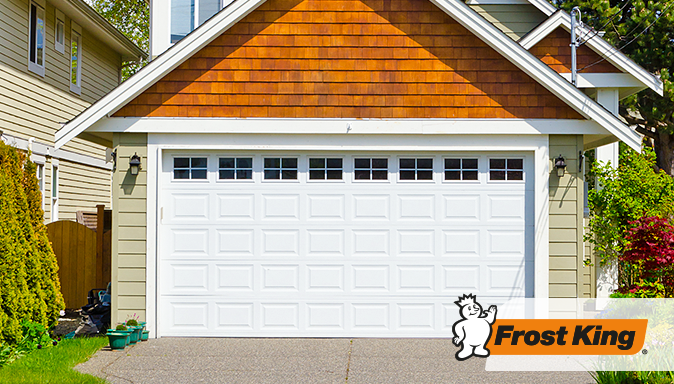Quick riddle: I’m the largest moving object in your home but you never really see me. What am I?
Answer: Your garage door.
If you’re like most people, you open your garage door when you want to leave and close it when the day is done…and give it zero thought at any other time. But when properly maintained, the average garage door can last for up to 20 years.
To keep the door and its components working smoothly, all it takes is some easy maintenance. Our handy checklist outlines the things you should do annually—and best of all, you can cross everything off this to-do list in a summer afternoon. Let’s get to it!
• Check the hardware.
Are the hinges loose? Is the track aligned? Are any bolts missing? Tighten all screws and bolts and replace any that are missing.
• Oil hardware.
Does your door make a loud, screeching noise as it opens and closes? Lubricating the rollers and hinges with a 3 in 1 oil will keep doors from sticking and squeaking and will also prevent rusting and corrosion.
• Test the balance.
A balanced garage door is completely supported by the tension of the system’s springs, making it easy to open and close the door; if the tension is too weak or too strong it puts pressure on your garage door opener and it won’t last as long. Check if the door is balanced by disconnecting the garage door opener (just pull on the manual release rope) and opening the door halfway. If it stays put, your door is balanced; if it slams shut or drifts open, your door is out of balance and you should call a garage door professional to rebalance it or replace the springs.
• Wash and clean the door.
Your garage door is probably covered with everything from grime, dirt, dust and pollen to cobwebs and de-icing salt. Start by wiping the door (inside and out!) with a soft-bristled broom, then rinse it with a hose to remove any loose dirt. Mix mild detergent and warm water in a bucket, then wipe the door down using a soft cloth and rinse with a hose.
• Remove rust.
If you have a metal garage door, you may notice rust spots as you are washing the door. To get rid of rust, wipe the area down with a rag soaked in white vinegar, then gently scrub with a steel wool pad. You may need to alternate wiping the spots with vinegar and scrubbing with the steel wool pad until all the rust is gone. Sand the damaged areas with sandpaper, then apply a primer to prevent further rust damage and paint with an exterior latex paint.
• Check the weatherstripping and garage door bottom seal.
The weatherstripping that seals the openings around your garage door needs maintenance too. If it’s in good condition, clean the weatherstripping with an all-purpose cleaner, then lubricate it with a silicone-based lubricant to keep it pliant and flexible. If you notice any rips or tears, it’s time to replace it. Frost King has a full line of weatherstripping products for garage doors. This video explains how to install our weatherseal products to keep rain, bugs, dust, snow and drafts out of your garage:
Next, check the door bottom to make sure the bottom seal is intact. The garage door bottom seal is a long strip of rubber that’s attached to the door and compresses when the door is closed to seal out dirt, water, drafts, bugs and rodents. The type of door bottom you use depends on what kind of door you have. Bottom seals on wood doors are usually nailed into place while metal doors have a channel that holds the door bottom in place; just thread the seal into the channel and slide it across the bottom of the door (it’s an easy job, but you’ll probably need a helper to feed it into place). Watch this video to find the right product and learn how to install it:
